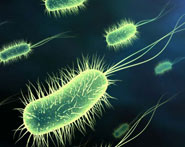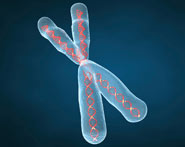


 النبات
النبات
 الحيوان
الحيوان
 الأحياء المجهرية
الأحياء المجهرية
 علم الأمراض
علم الأمراض
 التقانة الإحيائية
التقانة الإحيائية
 التقنية الحيوية المكروبية
التقنية الحيوية المكروبية
 التقنية الحياتية النانوية
التقنية الحياتية النانوية
 علم الأجنة
علم الأجنة
 الأحياء الجزيئي
الأحياء الجزيئي
 علم وظائف الأعضاء
علم وظائف الأعضاء
 الغدد
الغدد
 المضادات الحيوية
المضادات الحيوية|
Read More
Date: 2025-02-12
Date: 20-3-2016
Date: 2025-02-19
|
Efflux pumps are membrane proteins involved in the export of noxious substances from the bacterial cell interior to the external environment. efflux proteins are found in both Gram-negative and Gram-positive bacteria as well as in eukaryotic organisms.
Efflux pump Families
They were the five major families of efflux transporters: the resistance- nodulation-division (RND) family, the small multidrug resistance (SMR) family, the major facilitator superfamily (MFS), the multidrug and toxic compound extrusion (MATE) family and the adenosine triphosphate (ATP) binding cassette ( ABC) superfamily ( Mahapatr et al.,2022).

fig1. Efflux pump types (RND), (SMR), (MFS), (MATE) and (ABC) (Blanco et al.,2016).
major facilitator superfamily(MFS) Efflux Pumps
The major transporters of the facilitators form a superfamily consisting of a number of subfamilies; Among these subfamilies, polysaccharides and drug transporters are by far the most numerous. MFS transporters typically consist of about 400 amino acids hypothetically arranged into 12 transmembrane-spanning helices, with a large cytoplasmic loop between helices six and seven (Henderson et al., 2021) The MFS family of drug transporters consists of two domains centered around the central pore and two transposon domains Conformations from the cytoplasm to the peripheral side of the membrane in response to a Na+ or H+ ion gradient. MFS consists of membrane transport proteins present in bacteria to higher eukaryotes and involved in uniport, symport and antiport, from various substrates such as Krebs cycle intermediates, phosphate esters, oligosaccharides and antibiotics . into -12-helix and subfamilies 14-helix (eg, TetA(B) and TetA(K), class II and class K tetracycline transporters from E. coli and S. aureus respectively (Al-Dahmoshi et al., 2022).
Small Multidrug Resistance (SMR) Efflux Pumps
Small multidrug resistance transporters (SMR) system provide to study the minimal requirements for active transport (Kermani et al.,2022). They are also the small multidrug transporters, with four trans-membrane helices and no significant extra membrane domain, although they function as dimers the minimum functional unit is a bundle of eight α-helices (Alav et al., 2021) SMR transporter exports a broad class of polyaromatic cation substrates, thus Confer resistance to drug compounds matching this chemical description. Genes encoding SMR proteins (variously annotated emrE, sugE, smr, qac, ebr) are frequently found in mobile drug resistance gene arrays, and provide a broad selective advantage by conferring resistance to ubiquitous environmental pollutants with low-grade toxicity to microbes (Kermani et al.,2020) . MDR efflux pumps can contribute to the phenotype of antibiotic resistance at different levels, depending on the expression level. Intrinsic resistance: Some MDR efflux pumps, such as P. aeruginosa MexAB-OprN (Singh et al.,2020) or E.coli AcrAB-TolC .Acquired resistance: De-repression of the expression of the efflux pumps can be achieved by mutation at the regulatory proteins, rendering stable acquired resistance (Gil-Gil et al., 2023) In addition , multidrug efflux pumps display different functions with relevance to bacterial adaptation]n to different habitats. Some of these functions, such as resistance to biocides, heavy metals, resemble antibiotic resistance, since they are adaptive responses to avriety types of external injuries, others are related to interna detoxification of intermediate toxic bacterial metabolites. In add , some efflux pumps are include antimicrobial or even interkingdom signalling. Among the latter, it is important to mention that different efflux pumps are include in bacterial virulence, in both plant and animal hosts. Currently available information support the notion that, besides contribute to the antibiotic resistance, multidrug efflux pumps display a variety of functions with relevance to bacterial behaviour in different ecosystem (Scoffone et al., 2021; Gaurav et al., 2023; Pasqua et al., 2021).
ATP-binding Efflux pumps(ABC)
ATP-binding cassette (ABC) transporters are present in all cells of all organisms and utilize the energy of ATP binding/hydrolysis to transport substrates across cell membranes (Jones, & George, 2023). Typically, they are specific for a given ligand that can be an inorganic ion, amino acid, sugar, polypeptide, or any one of a number of other classes of molecule. Mammalian P-glycoprotein (ABCB1) is one of the best characterized ABC transporters and overexpressed confer resistance of cancer cells to a variety of chemotherapeutic drugs such as doxorubicin, taxol (Liu, 2019). Two cytoplasmic, nucleotide-binding domains (NBDs) bind and hydrolyse ATP and share a common protein fold distinct from that of other ATP-binding proteins. Two transmembrane domains (TMDs) each consist of multiple (generally six) membrane spanning α-helices and form the pathway through which substrates cross the membrane (Srikant, 2020).
Resistance Nodulation Division Efflux Pumps (RND)
Transporters of the RND family are limited to Gram-negative bacteria and play central roles in multidrug export, Valencia further subdivided the HME-RND proteins into sub-groups, according to the substrate they transport: HME1 (Zn2+, Co2+, Cd2+), HME2 (Co2+, Ni2+), HME3a (divalent cations), HME3b (monovalent cations), HME4 (Cu+ ou Ag+) and HME5 (Ni2+) ( Valencia et al.,2013).In Gram-negative bacteria, the resistance-nodulation cell-division (RND) solute transporter superfamily consists of a broad periplasmic domain that assembles with periplasmic fusion proteins and an outer membrane pore to form a complete tripartite channel from the inner cytoplasm past the outer membrane (Alenazy, (2022); Sagar et al., 2019).Since this system fully extrudes harmful substances from the bacterial cell, this family of membrane proteins is an efficient mechanism for membrane transport through proton antiport.
The AcrAB-TolC system of E.coli is the most well-known RND efflux pump(Sagar et al., 2019) . RND type multidrug transporters also export the broadest range of compounds of any known multidrug efflux system, including a variety of antibiotics (for example, ciprofloxacin, chloramphenicol, carbenicillin, and tetracycline), dyes (such as ethidium bromide), detergents (such as sodium dodecylsulfate), disinfectants (such as triclosan), organic solvents (such as pxylene), toxic lipids, and metabolic inhibitors (Chopra, B., & Dhingra, A. K. 2021).
Multidrug and Toxic Extrusion (MATE) Efflux Pumps
Export of substrates and toxins by the cell is a fundamental life process and members of the MATE family represent the last class of multidrug resistance (MDR) transporters to be structurally characterized. MATE transporters involved a variety of important biological functions across all kingdoms of life (Upadhyay et al., 2019). MATE transporters are very similar in size to the MFS transporters and are typically composed of approx. 450 amino acids which are putatively arranged into 12 helices however, they do not have any sequence similarity to members of the MFS transporters (Al-Dahmoshi et al., 2022). Another MATE transporter, YdhE from E. coli, also has been characterized and shown confer resistance to the cationic antimicrobials (Kumawat et al. 2023) Latest investigation reveal that bacterial MATE transporters function as antibiotic efflux pumps and confer resistance to tigecycline, a new glycylcycline class antibiotic developed to overcome methicillin-resistant and vancomycin-resistant S. aureus (Seukep et al., 2022) also These proteins mediate resistance to hydrophilic compounds, dyes, aminoglycosides and fluoroquinolones. Norfloxacin accumulation experiments appeared that Vibrio parahaemolyticus consist an energy dependent efflux system designated (Sharma et al., 2023).
References
--------------
Alav, I., Kobylka, J., Kuth, M. S., Pos, K. M., Picard, M., Blair, J. M., & Bavro, V. N. (2021). Structure, assembly, and function of tripartite efflux and type 1 secretion systems in gram-negative bacteria. Chemical Reviews, 121(9), 5479-5596.
Al-Dahmoshi, H., Ali, S. A., & Al-Khafaji, N. (2022). Efflux Pumps among Urinary E. coli and K. pneumoniae Local Isolates in Hilla City, Iraq. The Global Antimicrobial Resistance Epidemic: Innovative Approaches and Cutting-Edge Solutions, 239.
Alenazy, R. (2022). Drug efflux pump inhibitors: a promising approach to counter multidrug resistance in Gram-negative pathogens by targeting AcrB protein from AcrAB-TolC multidrug efflux pump from Escherichia coli. Biology, 11(9), 1328.
Chopra, B., & Dhingra, A. K. (2021). Efflux Pump and its Inhibitors: Novel Targets to Combat Drug Resistance. Anti-Infective Agents, 19(3), 231-251. .
Gaurav, A., Bakht, P., Saini, M., Pandey, S., & Pathania, R. (2023). Role of bacterial efflux pumps in antibiotic resistance, virulence, and strategies to discover novel efflux pump inhibitors. Microbiology, 169(5), 001333.
Gil-Gil, T., Laborda, P., Ochoa-Sánchez, L. E., Martínez, J. L., & Hernando-Amado, S. (2023). Efflux in Gram-negative bacteria: what are the latest opportunities for drug discovery?. Expert Opinion on Drug Discovery, 1-16.
Henderson, P. J., Maher, C., Elbourne, L. D., Eijkelkamp, B. A., Paulsen, I. T., & Hassan, K. A. (2021). Physiological functions of bacterial “multidrug” efflux pumps. Chemical reviews, 121(9), 5417-5478.
Jones, P. M., & George, A. M. (2023). The Switch and Reciprocating Models for the Function of ABC Multidrug Exporters: Perspectives on Recent Research. International Journal of Molecular Sciences, 24(3), 2624.
Kermani, A. A., Burata, O. E., Koff, B. B., Koide, A., Koide, S., & Stockbridge, R. B. (2022). Crystal structures of bacterial small multidrug resistance transporter EmrE in complex with structurally diverse substrates. Elife, 11, e76766.
Kumawat, M., Nabi, B., Daswani, M., Viquar, I., Pal, N., Sharma, P., ... & Kumar, M. (2023). Role of bacterial efflux pump proteins in antibiotic resistance across microbial species. Microbial Pathogenesis, 106182.
Liu, X. (2019). ABC family transporters. Drug transporters in drug disposition, effects and toxicity, 13-100.
Pasqua, M., Bonaccorsi di Patti, M. C., Fanelli, G., Utsumi, R., Eguchi, Y., Trirocco, R., & Colonna, B. (2021). Host-bacterial pathogen communication: the wily role of the multidrug efflux pumps of the MFS family. Frontiers in Molecular Biosciences, 8, 723274.
Sagar, S., Kaistha, S., Das, A. J., Kumar, R., Sagar, S., Kaistha, S., ... & Kumar, R. (2019). Intrinsic Antibiotic Resistance Mechanism in Bacteria. Antibiotic Resistant Bacteria: A Challenge to Modern Medicine, 69-85
Scoffone, V. C., Trespidi, G., Barbieri, G., Irudal, S., Perrin, E., & Buroni, S. (2021). Role of RND efflux pumps in drug resistance of cystic fibrosis pathogens. Antibiotics, 10(7), 863.
Seukep, A. J., Mbuntcha, H. G., Kuete, V., Chu, Y., Fan, E., & Guo, M. Q. (2022). What Approaches to Thwart Bacterial Efflux Pumps-Mediated Resistance?. Antibiotics, 11(10), 1287.
Sharma, S., Kaushik, V., Kulshrestha, M., & Tiwari, V. (2023). Different Efflux Pump Systems in Acinetobacter baumannii and Their Role in Multidrug Resistance. Advances in Microbiology, Infectious Diseases and Public Health: Volume 17, 155-168.
Singh, T., Dar, S. A., Das, S., & Haque, S. (2020). Importance of efflux pumps in subjugating antibiotic resistance. In Drug Discovery Targeting Drug-Resistant Bacteria (pp. 273-299). Academic Press.
Srikant, S. (2020). Evolutionary history of ATP -binding cassette proteins. FEBS letters, 594(23), 3882-3897.
Upadhyay, N., Kar, D., Deepak Mahajan, B., Nanda, S., Rahiman, R., Panchakshari, N., & Datta, S. (2019). The multitasking abilities of MATE transporters in plants. Journal of experimental botany, 70(18), 4643-4656.



|
|
|
|
للعاملين في الليل.. حيلة صحية تجنبكم خطر هذا النوع من العمل
|
|
|
|
|
|
|
"ناسا" تحتفي برائد الفضاء السوفياتي يوري غاغارين
|
|
|
|
|
|
|
نحو شراكة وطنية متكاملة.. الأمين العام للعتبة الحسينية يبحث مع وكيل وزارة الخارجية آفاق التعاون المؤسسي
|
|
|